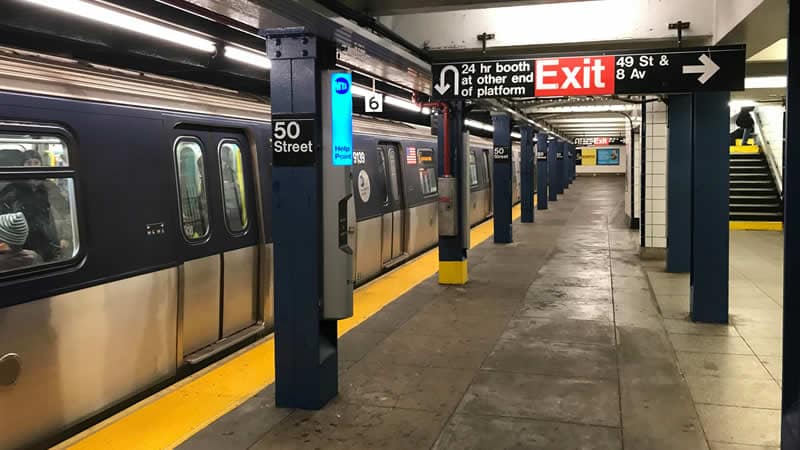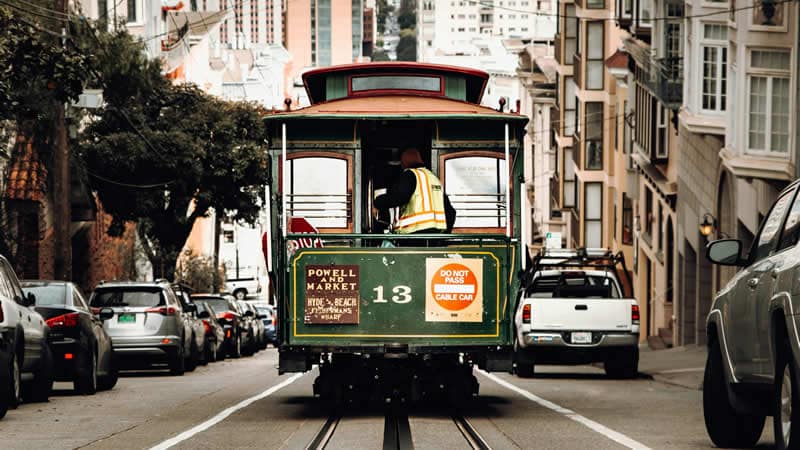US Cities with the Best Public Transportation Infrastructure
Transportation infrastructure is a critical component of urban planning, development, and livability, shaping the way residents move, live, and work within a city. In the United States, several cities have distinguished themselves through their innovative and effective transportation systems. These cities have not only improved mobility for their residents but have also set benchmarks in sustainability, technology integration, and urban planning. Let’s dive into the US cities with the best public transportation infrastructure, highlighting their key initiatives and achievements.
The Role of Transportation Infrastructure in Urban Development
Economic Vitality
Transportation infrastructure is a significant driver of economic growth. Efficient transport systems reduce travel time, cut costs, and improve access to jobs, education, and services. Cities with robust infrastructure attract businesses, boost productivity, and enhance their competitiveness on a national and global scale.
Social Equity and Mobility
A well-designed transportation network ensures all residents, regardless of socioeconomic status, have access to essential services and opportunities. This inclusivity promotes social equity, enabling all citizens to participate fully in the urban economy and society.
Environmental Sustainability
Modern transportation systems are pivotal in reducing urban carbon footprints. By encouraging the use of public transit, cycling, and walking, cities can significantly lower greenhouse gas emissions and decrease reliance on private vehicles, contributing to broader environmental goals.
Leading US Cities in Transportation Infrastructure
New York City: The Quintessential Urban Transit Hub
Extensive Public Transit Network
New York City boasts one of the most comprehensive public transit systems in the world. The Metropolitan Transportation Authority (MTA) operates subways, buses, and commuter rails that serve millions of passengers daily. The city’s subway system, with 472 stations, is the largest in the world by number of stations and is crucial for daily commutes and urban mobility.
Innovations in Transportation
New York has implemented several innovative measures to improve its transportation infrastructure. The introduction of the Select Bus Service (SBS), which offers faster and more reliable bus services through dedicated lanes and off-board fare payment, is one such initiative. Additionally, the city has embraced the Vision Zero program, aimed at reducing traffic fatalities and improving pedestrian safety through better street design and traffic regulations.
San Francisco: A Pioneer in Sustainable Transportation
Bay Area Rapid Transit (BART)
The Bay Area Rapid Transit (BART) system is a critical component of San Francisco’s transportation infrastructure. BART connects the city with surrounding counties, providing a fast and efficient transit option for commuters. The system is continually expanding and upgrading to meet the growing demand and improve service quality.
Emphasis on Sustainability
San Francisco has made significant strides in promoting sustainable transportation. The city’s extensive network of bike lanes, coupled with programs like Bike Share, encourages cycling as a viable and eco-friendly mode of transport. Additionally, San Francisco’s commitment to electric vehicles (EVs) is evident in its widespread EV charging infrastructure and incentives for EV ownership.
Chicago: The Heart of America’s Transportation Network
Comprehensive Transit System
Chicago’s transportation infrastructure is characterized by its extensive and integrated transit system. The Chicago Transit Authority (CTA) operates the ‘L’ train system, which, along with buses, provides comprehensive coverage across the city. The Regional Transportation Authority (RTA) oversees commuter rail services, connecting Chicago with its suburbs and neighboring states.
Innovations and Improvements
Chicago is continually investing in its transportation infrastructure to enhance efficiency and service quality. Projects like the Red and Purple Modernization (RPM) program aim to upgrade and expand key transit lines, reducing congestion and improving reliability. The city’s focus on transit-oriented development (TOD) encourages sustainable urban growth centered around transit hubs.
Boston: A Legacy of Transportation Excellence
Massachusetts Bay Transportation Authority (MBTA)
Boston’s MBTA, commonly known as the ‘T,’ is one of the oldest and most extensive public transit systems in the United States. It includes subways, buses, commuter rails, and ferries, providing comprehensive coverage throughout the Greater Boston area. The system is vital for daily commutes and urban mobility.
Focus on Modernization
Boston is committed to modernizing its transportation infrastructure to meet future demands. The Green Line Extension (GLX) project, aimed at expanding the light rail service, is a key initiative. Additionally, Boston’s focus on smart transportation solutions, such as real-time transit information and mobile fare payment options, enhances the overall transit experience.
Seattle: Innovation in Mobility
Sound Transit and Light Rail Expansion
Seattle’s transportation infrastructure is marked by its innovative and expanding light rail system, operated by Sound Transit. The Link Light Rail connects key areas within the city and the surrounding region, providing a reliable and efficient transit option for commuters.
Emphasis on Technology and Sustainability
Seattle is a leader in integrating technology with transportation. The city’s use of intelligent transportation systems (ITS) improves traffic management and enhances the efficiency of transit services. Seattle is also committed to sustainability, with initiatives like the electrification of the bus fleet and the promotion of cycling through extensive bike lanes and bike-sharing programs.
Portland: A Model of Multimodal Transportation
TriMet and MAX Light Rail
Portland’s TriMet operates an extensive public transit system that includes buses, light rail, and commuter trains. The MAX Light Rail is a cornerstone of this system, connecting the city with surrounding suburbs and providing a reliable transit option for residents.
Commitment to Active Transportation
Portland is renowned for its commitment to active transportation. The city boasts an extensive network of bike lanes and pedestrian-friendly infrastructure, encouraging walking and cycling as primary modes of transport. Programs like Biketown, the city’s bike-sharing initiative, further promote sustainable and healthy transportation options.
Washington, D.C.: A Capital in Transit
Washington Metropolitan Area Transit Authority (WMATA)
The WMATA operates the Metrorail and Metrobus systems, which are essential for commuting in and around the nation’s capital. The Metrorail, one of the busiest in the country, serves as the backbone of the region’s public transit network.
Strategic Investments and Improvements
Washington, D.C., is continually investing in its transportation infrastructure to enhance service and meet growing demand. Projects like the Silver Line extension, aimed at improving connectivity to Dulles International Airport and expanding service to new areas, are key initiatives. The city also focuses on sustainable transportation, with extensive bike-sharing programs and plans to electrify the bus fleet.
Common Features of Leading Cities
Integration of Multiple Modes of Transport
Leading cities in transportation infrastructure integrate various modes of transport, including subways, buses, light rail, and active transportation options like cycling and walking. This multimodal approach ensures comprehensive coverage and seamless connectivity.
Emphasis on Sustainability
Sustainability is a common theme among cities with advanced transportation infrastructure. These cities prioritize public transit, promote active transportation, and invest in green technologies like electric vehicles and renewable energy for transit systems.
Use of Technology and Innovation
Innovation and technology play a crucial role in enhancing transportation infrastructure. Leading cities adopt intelligent transportation systems (ITS), real-time transit information, and mobile payment solutions to improve efficiency and user experience.
Focus on Inclusivity and Accessibility
Inclusivity and accessibility are key priorities for cities with exemplary transportation systems. These cities ensure that all residents, regardless of income or location, have access to reliable and affordable transportation options.
Transportation infrastructure is fundamental to the functioning and growth of urban areas. US cities like New York, San Francisco, Chicago, Boston, Seattle, Portland, and Washington, D.C., are leading the way with their innovative and effective transportation systems. By integrating various modes of transport, prioritizing sustainability, leveraging technology, and focusing on inclusivity, these cities provide valuable models for others to follow. As urban populations continue to grow, the importance of investing in robust, efficient, and sustainable transportation infrastructure cannot be overstated. These leading cities demonstrate that with vision, planning, and investment, it is possible to create transportation systems that enhance mobility, support economic growth, and improve the quality of life for all residents.













